Shinjuku is one of Tokyo’s most iconic districts, known for its dense mix of skyscrapers, shopping malls, nightlife, and quiet green pockets. This is the heart of modern Tokyo, where office workers stream through train platforms, tourists spill out of department stores, and small alleyway bars come alive at night.
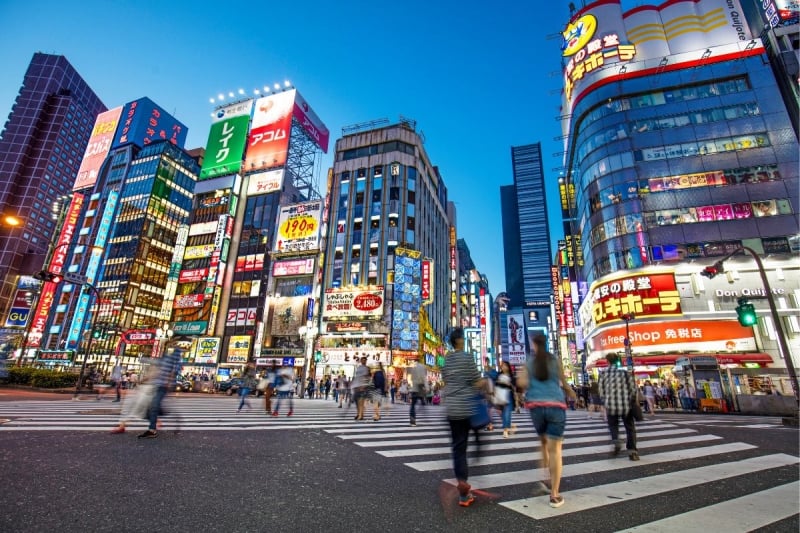
Image Credit: xavierarnau via Canva Pro
Shinjuku Station itself is the world’s busiest railway station, connecting over two million passengers a day. Around it, the district stretches in many directions: west to the towering skyscrapers of the government district, east to Kabukicho’s neon-drenched nightlife, and north to the bustling Korean enclave of Shin-Okubo.
Shinjuku is not a place you can fully understand in a single visit. But whether it is your first time or a return trip, here is a grounded guide to what to explore, where to eat, and what not to miss.
Also read: 21 Cheap and Free Things to Do in Tokyo: A 2025 Budget Travel Guide
Attractions and Things to Do
Shinjuku Gyoen National Garden
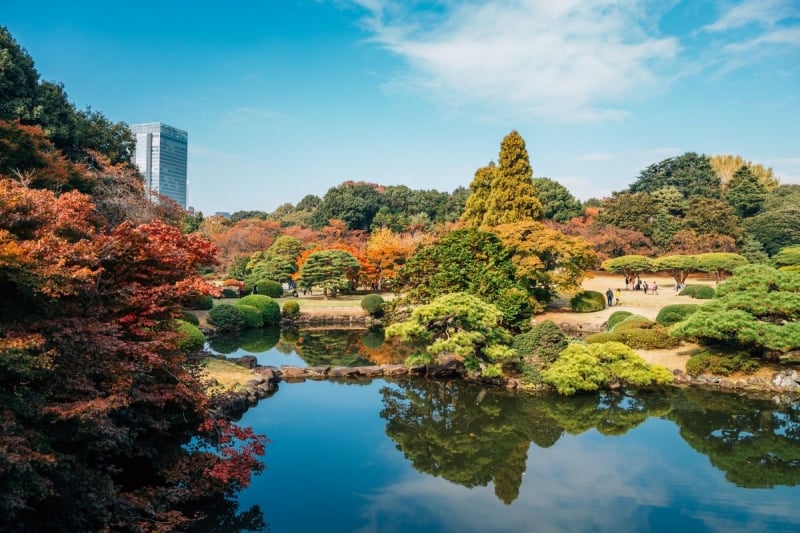
Image Credit: Sanga Park via Canva Pro
One of Tokyo’s most beautiful parks, Shinjuku Gyoen is a calm, spacious garden located about a ten-minute walk from the station’s south exit. It combines Japanese, English, and French garden styles, with wide lawns, seasonal flower beds, and a peaceful greenhouse. The garden is particularly popular during cherry blossom season in spring and again in early November for autumn foliage. Entry costs 500 yen.
Tokyo Metropolitan Government Building
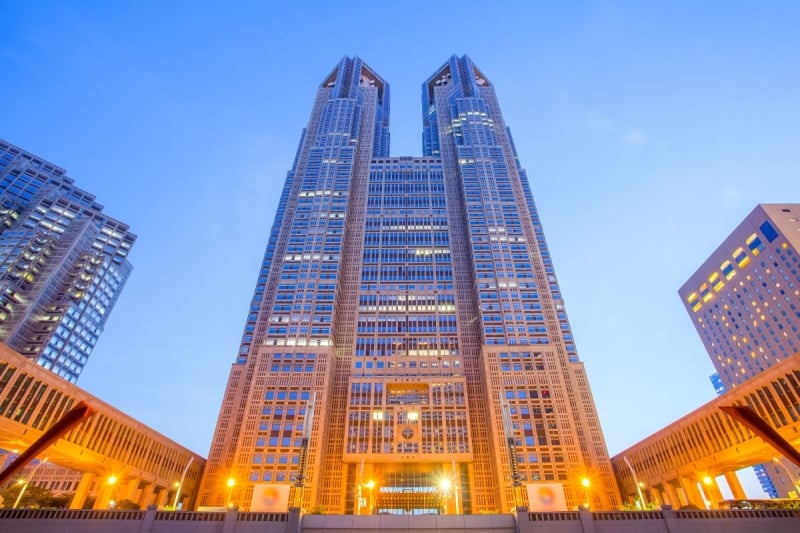
Image Credit: Torsakarin via Canva Pro
Located in Shinjuku’s western skyscraper district, this twin-towered building houses the offices of the Tokyo Metropolitan Government. The 45th-floor observatories are free to enter and offer sweeping views of the city. On clear days, Mount Fuji is visible from the southern observatory. In the evenings, projection mapping shows are held on the building’s exterior every 30 minutes.
Golden Gai
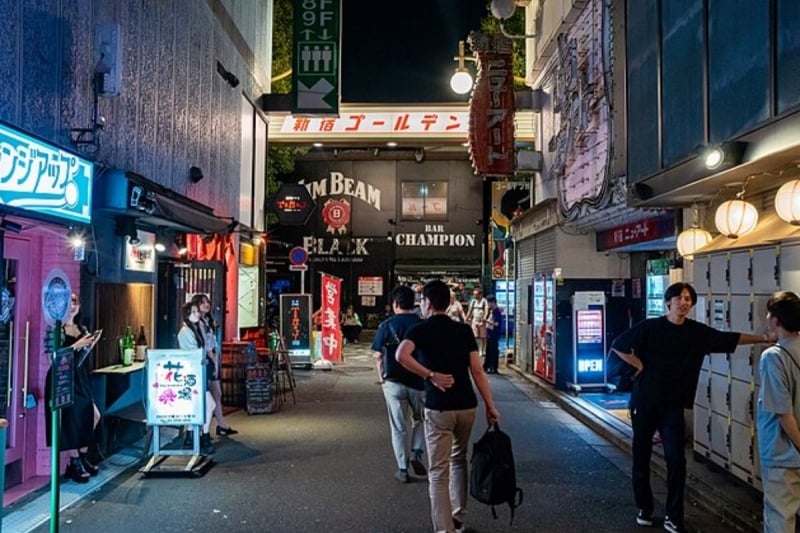
Image Credit: Dick Thomas Johnson from Tokyo, Japan via Wikimedia Commons
Golden Gai is a small but storied nightlife district filled with narrow lanes and tiny bars. Each bar has its own personality, and many only seat a handful of customers. Some are open to tourists and display signs in English, while others remain more private. It is worth a walk-through, even if you do not stop for a drink.
Omoide Yokocho (Memory Lane)
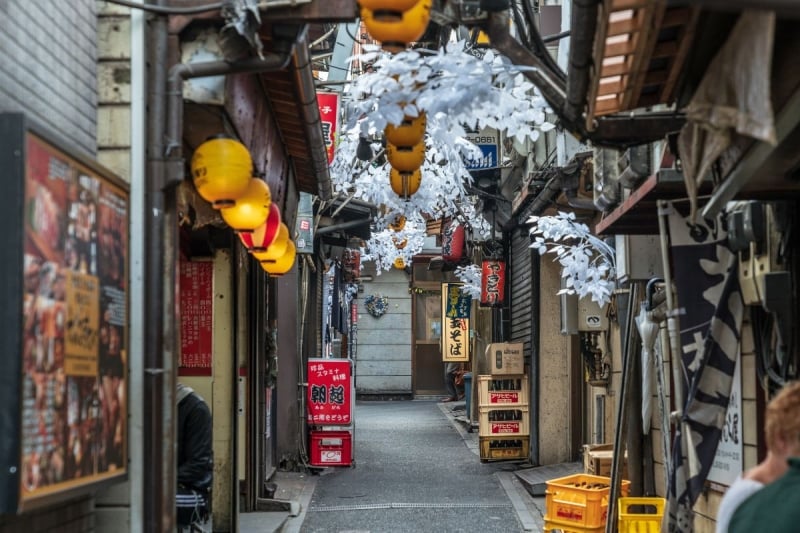
Image Credit: Starcevic via Canva Pro
Just outside the station’s northwest exit, Omoide Yokocho is a cluster of tiny eateries and yakitori shops packed into narrow alleys. It is popular with locals and tourists alike, offering a glimpse into an older style of postwar Tokyo. Most shops open in the late afternoon and serve until midnight.
Kabukicho
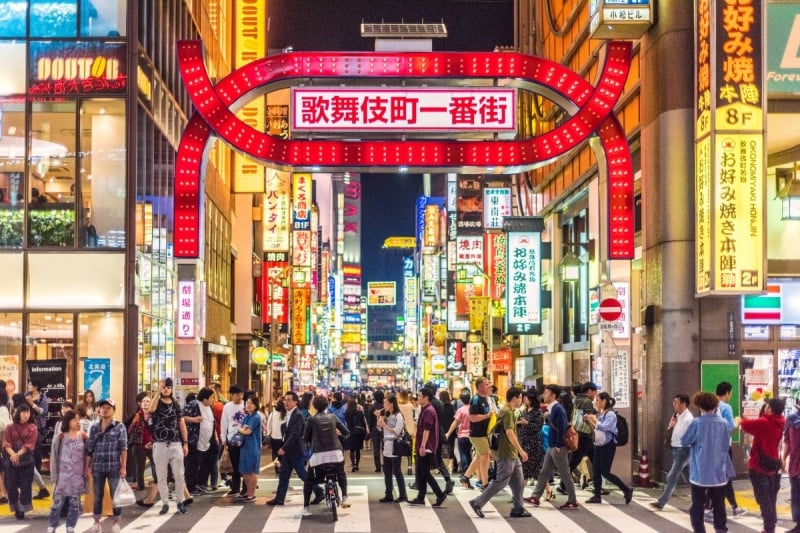
Image Credit: ke via Canva Pro
Kabukicho is Japan’s largest entertainment district and home to everything from game arcades to themed cafes, host clubs, and more adult-oriented establishments. While some parts of Kabukicho cater to nightlife seekers, it is also worth visiting during the day for photo spots and people-watching. Visitors should be cautious about entering bars promoted by street touts, especially those targeting foreign tourists.
Shin-Okubo Koreatown
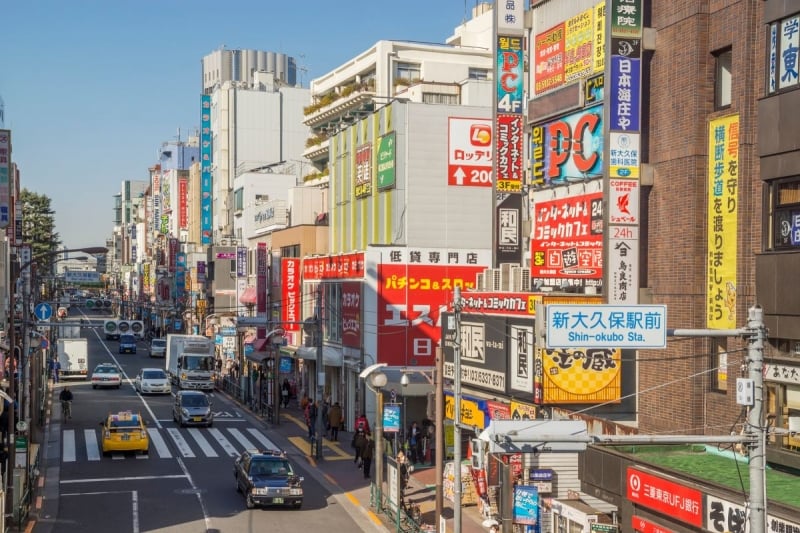
Image Credit: kokkai via Canva Pro
Just one train stop north of Shinjuku Station, Shin-Okubo is a lively Korean enclave popular for K-pop shops, Korean skincare stores, and authentic Korean food. The main road is lined with cafés and restaurants, many of which stay open late.
Also read: 8 Must-Visit Aquariums in and Around Tokyo This 2025
What to Eat in Shinjuku
Shinjuku is home to more than 6,000 restaurants, offering everything from standing sushi counters to premium teppanyaki experiences. Whether you’re dining solo or with a group, there’s no shortage of memorable meals in the area. Here are five places that stand out, each with a distinct offering, price point, and vibe.
1. Udon Shin
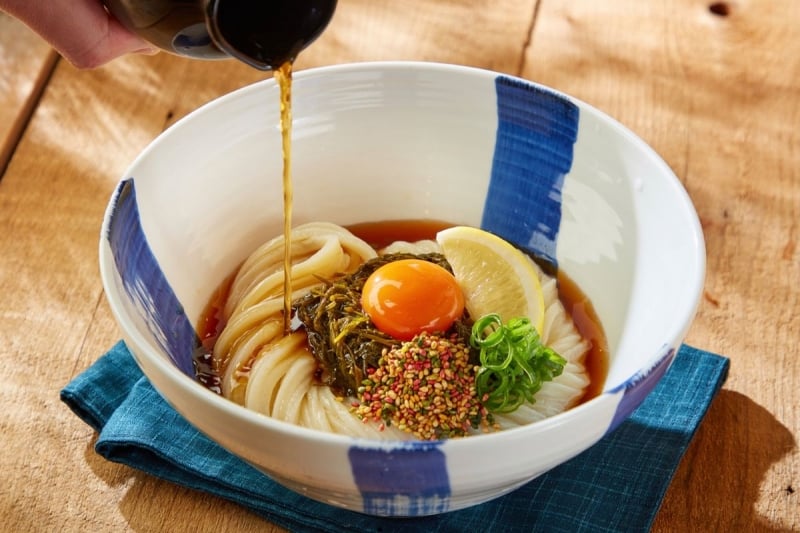
Image Credit: Udon Shin Official Website
Udon Shin has built a reputation for serving what many consider the best udon in Tokyo. Its thick, chewy noodles are made fresh daily, and the bowls come topped with ingredients like soft-boiled eggs, butter, pepper, and tender beef. Be prepared for a wait, but the new virtual queue system helps. Ideal for travellers who plan ahead and want a bowl worth waiting for.
2. Shinjuku Kotegaeshi
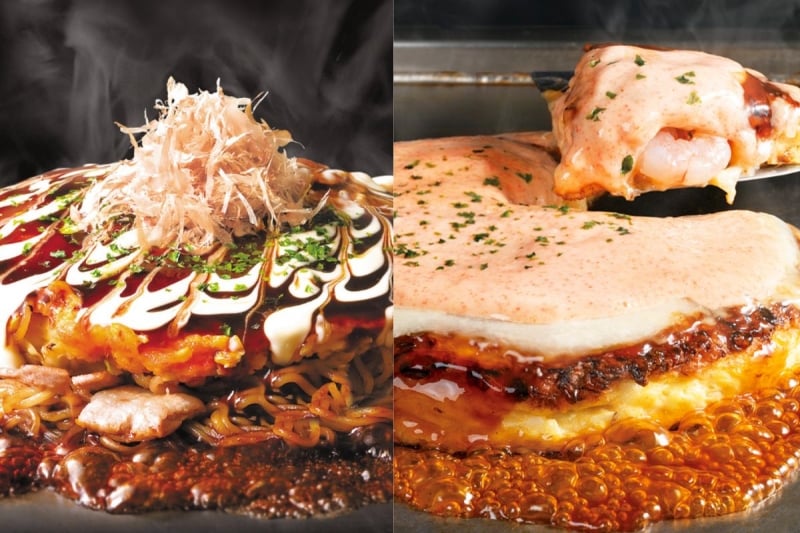
Image Credit: Shinjuku Kotegaeshi Official Website
For something hands-on, this self-grilling okonomiyaki restaurant lets diners make their own Japanese-style pancakes right at the table. It’s a fun and interactive experience, especially for first-time visitors. The friendly staff are on hand to assist, and the ingredients are fresh and seasonal, making for a warm and relaxed meal.
3. Sushi Ebisu Nishi-Shinjuku
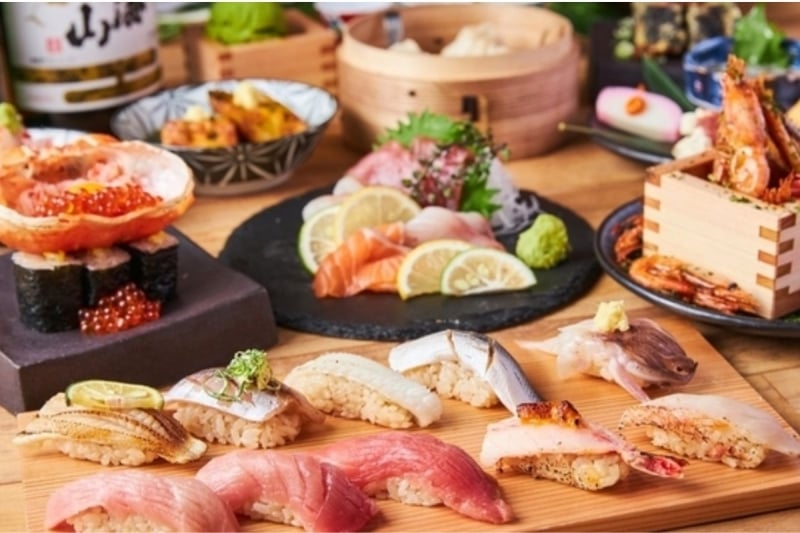
Image Credit: Sushi Ebisu Nishi-Shinjuku via Tablelog
This casual sushi izakaya offers an accessible but authentic sushi experience, with reasonably priced nigiri, fresh oysters, and creative house specials like ikura cocktails. With English menus and a friendly atmosphere, it’s a great option for travellers looking to enjoy quality sushi without formality.
4. Fūunji
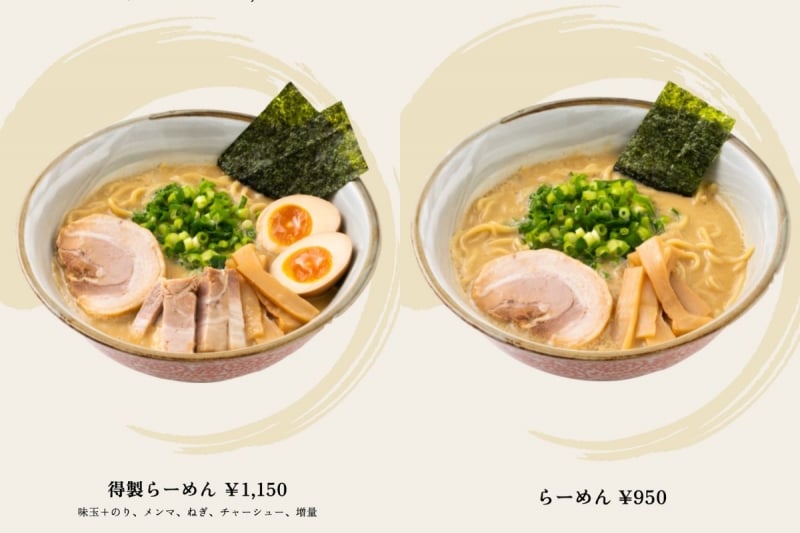
Image Credit: FUUNJI Official Website
This cosy spot near Shinjuku Station is legendary for its tsukemen (dipping noodles). Expect a thick, umami-rich broth and firm noodles served separately — a style that regulars swear by. Be prepared for a queue and quick turnover, as the space is small and focused on efficiency, not lingering.
5. Takuan Botantei
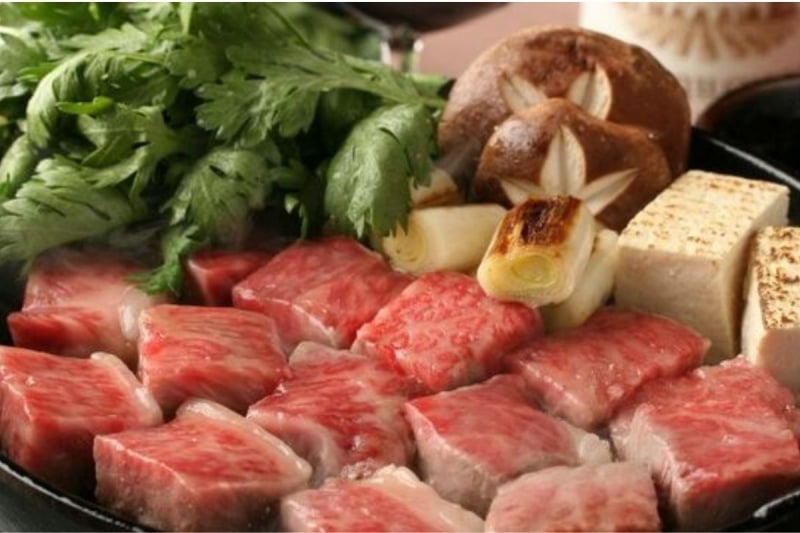
Image Credit: Takuan Botanei via Tablelog
If you’re in the mood for something more refined, Takuan Botantei serves premium A5-grade Japanese black beef in a serene, modern Japanese setting. Signature dishes like miso beef hot pot and grilled salt-crust beef make it ideal for a quiet dinner or special occasion. Private rooms are available, and the attention to detail sets it apart.
Also read: Shinjuku Food Guide: A Must-Eat List!
Shopping and Malls
Isetan Shinjuku
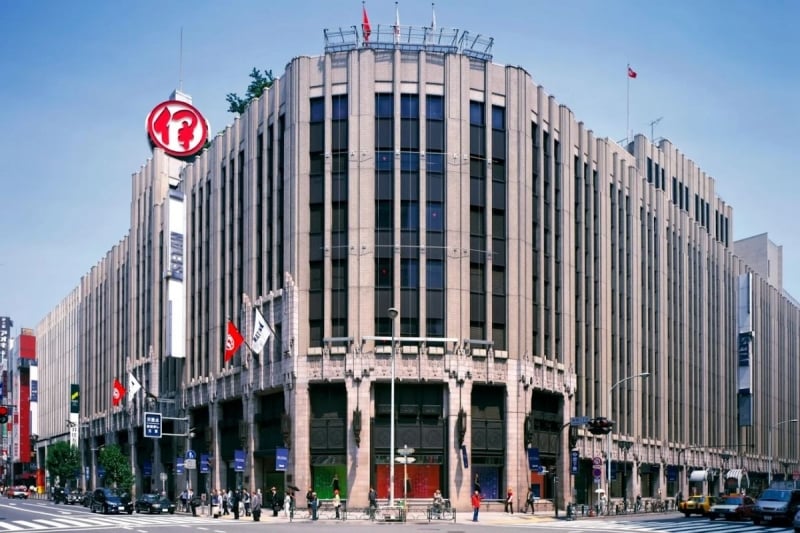
Image Credit: Isetan Shinjuku Official Website
Isetan is one of Tokyo’s most established department stores, especially known for its fashion and food floors. The women’s building features a wide selection of international luxury labels. Across the street, the men’s building is highly regarded for its curated range of menswear and accessories. Isetan is also home to a basement food hall that many consider one of the best in the city. Crowds tend to pick up in the late afternoon, so visiting on a weekday morning offers a more relaxed experience.
Takashimaya Times Square
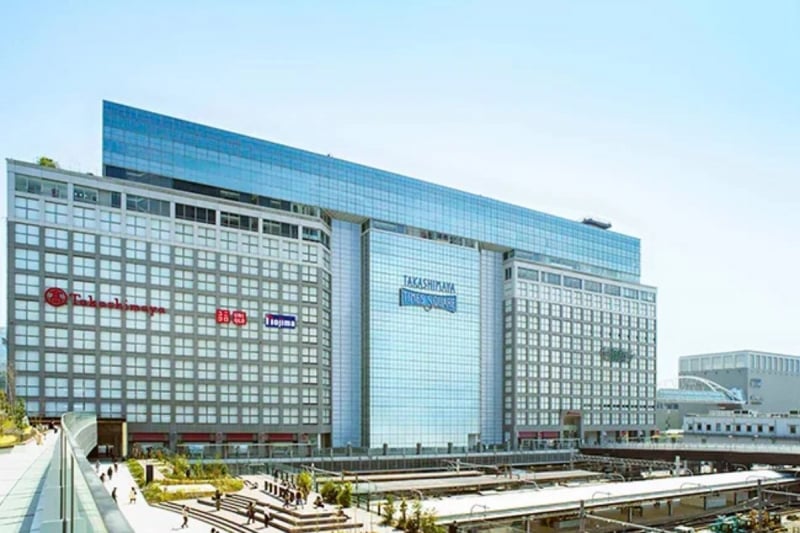
Image Credit: Takashimaya Shinjuku via Google Maps
Located on the south side of Shinjuku Station, this multi-building complex houses a large Takashimaya department store along with other major tenants such as Tokyu Hands and Kinokuniya. The upper levels of the complex are home to a wide range of restaurants that offer everything from casual Japanese meals to upscale international cuisine. The layout is spacious and easier to navigate compared to some of Shinjuku’s more vertical shopping centres.
Lumine Complex
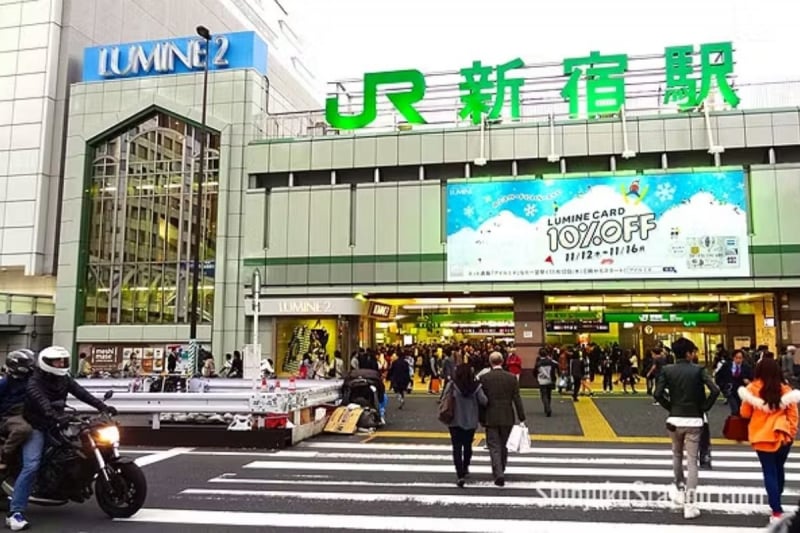
Image Credit: Shinjuku Station Official Website
The Lumine Complex is made up of three buildings connected directly to Shinjuku Station: Lumine 1 and Lumine 2 on the south side, and Lumine Est above the east exit. These malls cater mostly to younger shoppers, with fashion boutiques, lifestyle stores, beauty counters, and stylish cafes. Lumine Est is particularly popular with those looking for trendier street styles or local Japanese fashion labels, while Lumine 1 and 2 offer a slightly more refined mix of shops and skincare brands.
Also read: Souvenirs to Buy in Tokyo: Sweet Snacks Worth Bringing Home From Japan
How to Get There
Shinjuku Station is served by multiple JR and private railway lines, including the JR Yamanote Line, JR Chuo Line, Odakyu Line, Keio Line, and Tokyo Metro Marunouchi Line. It is one of the easiest stations to reach from anywhere in Tokyo.
From Tokyo Station
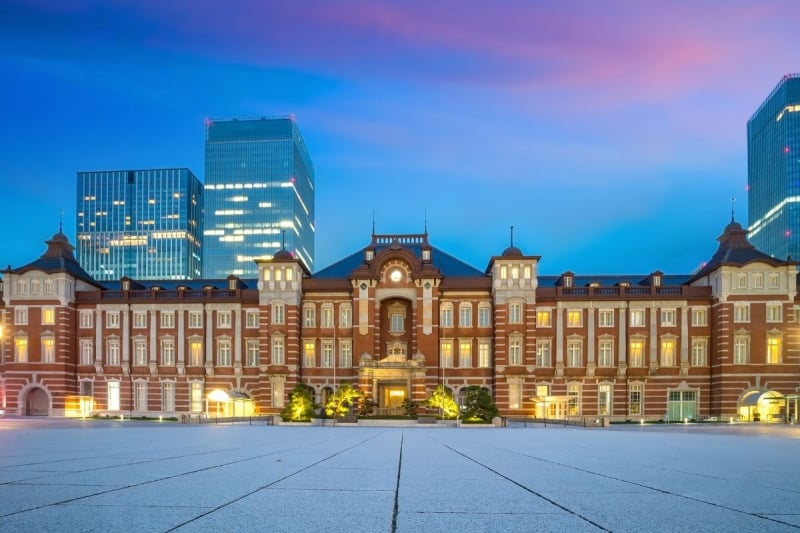
Image Credit: f11photo via Canva Pro
Take the JR Chuo Line (Rapid). The journey takes about 14 minutes and costs 210 yen (S$1.86).
From Ueno Station
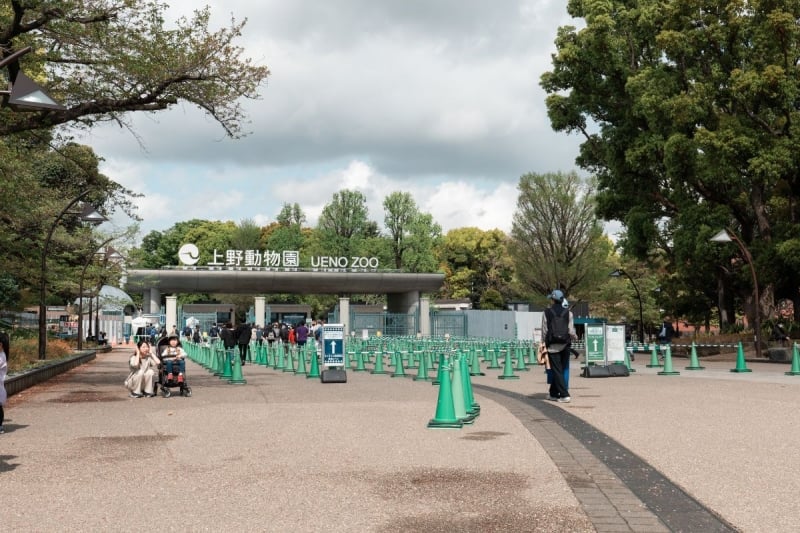
Image Credit: Becris via Canva Pro
Take the JR Yamanote Line for a direct trip, or change at Kanda Station to the JR Chuo Line for a faster ride. Both options cost around 210 yen (S$1.86). and take under 25 minutes.
By bus
Long-distance buses arrive and depart from Busta Shinjuku, a large terminal located directly above the station.
Also read: Tokyo Subway Guide: How To Get Around Japan Using Trains
Final Thoughts
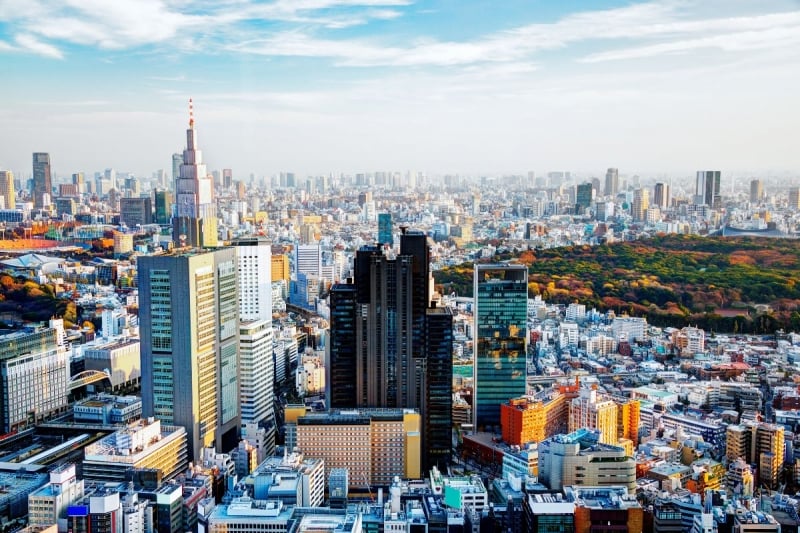
Image Credit: SeanPavonePhoto via Canva Pro
Shinjuku is a place that never really sleeps. Its pace can be overwhelming at first, but it also offers some of the most memorable and layered experiences Tokyo has to offer. You can start your morning in a quiet garden, shop through the afternoon, and find yourself sipping noodles under red lanterns by night.
For first-time visitors, it helps to have a rough plan — Shinjuku Station alone can feel like a maze. But once you get your bearings, the district opens up in all directions.
Spend some time walking without a fixed destination. That is often when Shinjuku reveals its quietest corners, its most surprising shops, and the fleeting charm of a city that is always in motion.




